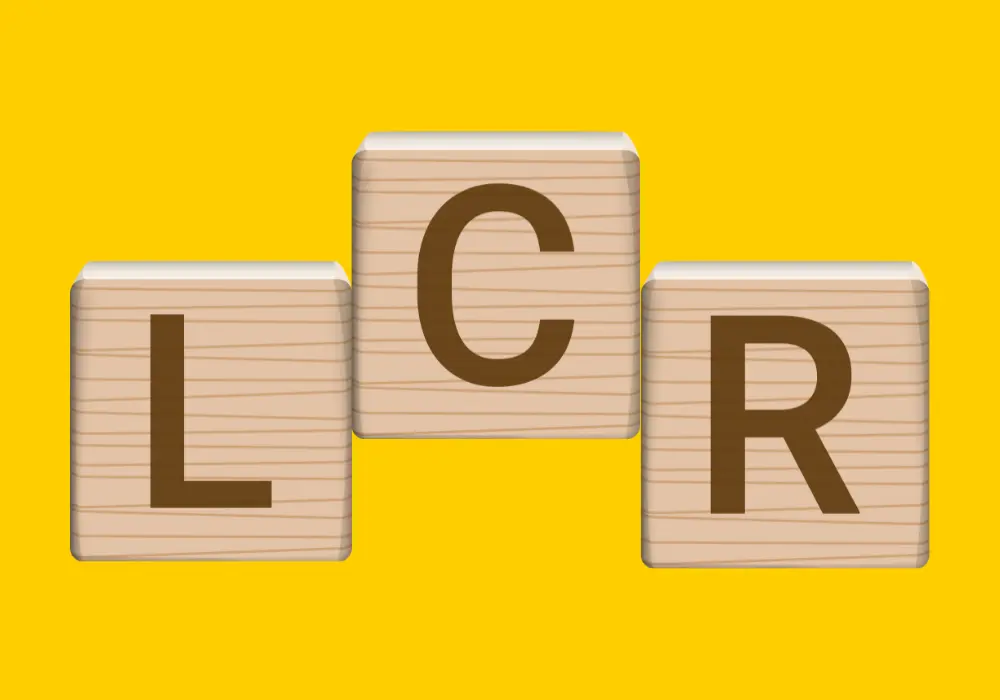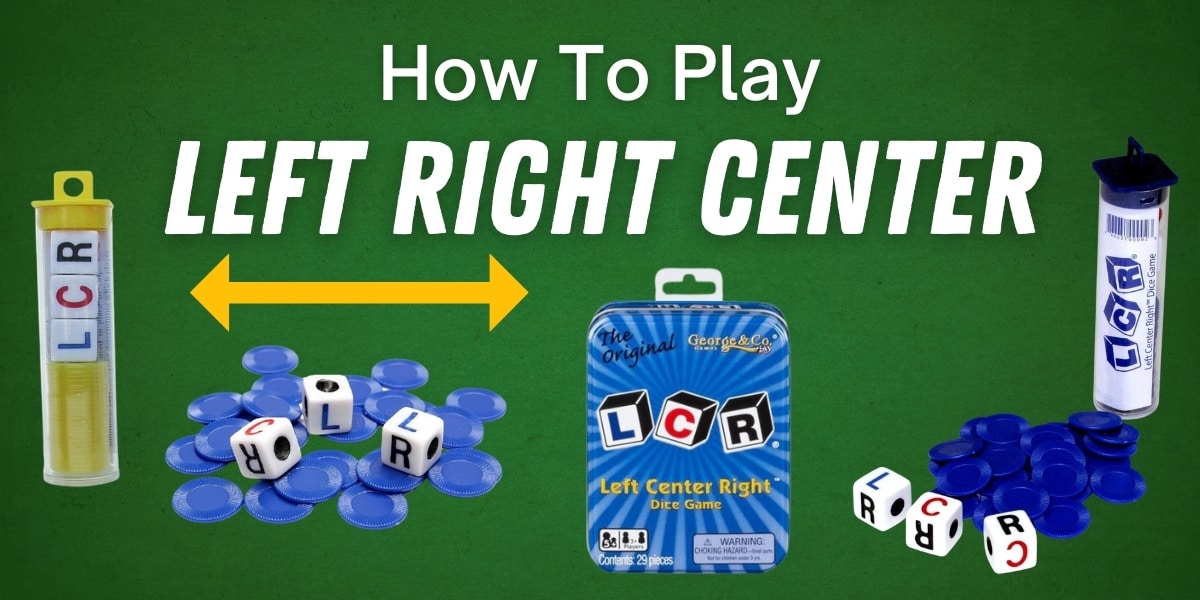Introduction
The LCR (Left Center Right) dice game is a fast-paced, luck-based game that has become a staple at parties, family gatherings, and casual game nights. Traditionally, it is played using a special set of dice labeled with the letters L, C, and R, along with dots. However, not everyone has access to the official LCR dice set. The good news is that you can still enjoy the game using regular six-sided dice with just a few simple modifications and some basic understanding of the original rules. This blog post will walk you through everything you need to know to play the LCR dice game with regular dice, keeping the fun intact and ensuring an exciting experience for players of all ages.
Understanding The Original LCR Game

Before diving into how to adapt the LCR game using regular dice, it’s important to understand the original gameplay. In the standard LCR dice game, each player starts with an equal number of tokens or chips, typically three. The game is played in turns, and on a player’s turn, they roll up to three LCR dice—one die for each token they currently have, up to a maximum of three. Each die face shows either an L (Left), a C (Center), an R (Right), or a dot. If a player rolls an L, they pass one token to the player on their left. If they roll an R, they pass one token to the player on their right. A C result means they place one token into the center pot, which is out of play. Dots indicate that the player keeps their token. The game continues around the circle until only one player remains with tokens. That player wins the game.
Substituting Regular Dice For LCR Dice
When you don’t have access to the official LCR dice, you can easily substitute regular six-sided dice (also known as d6). To adapt the game, you’ll assign specific values to the numbers on each die face. The most common and intuitive method is to designate numbers 1 and 2 for Left (L), numbers 3 and 4 for Center (C), and numbers 5 and 6 for Right (R). Alternatively, you can use 1 for Left, 2 for Center, 3 for Right, and 4-6 as dots, depending on how closely you want to mimic the original distribution of outcomes. The choice ultimately depends on the desired pace and complexity of your homebrew version of the game.
Once the dice values are assigned, make sure all players understand the equivalence before starting. For easier gameplay, you can even label the dice using small stickers or write the letters L, C, and R directly on the faces of the dice if you’re using spare ones. This adds to the experience and reduces confusion, especially for younger players or newcomers.
Gameplay Setup Using Regular Dice
Setting up the game with regular dice is almost identical to the official version. Gather all players in a circle and distribute three chips, coins, or tokens to each person. You can use pennies, poker chips, buttons, or any small objects as tokens. Choose a player to go first, and play continues clockwise around the circle. The first player rolls up to three dice, depending on how many tokens they currently have. For example, if a player only has two tokens, they roll two dice; if they have one, they roll one die.
Each roll determines the action they must take—passing tokens to the left, right, or placing them in the center. Remember that tokens passed to the center are out of play, and players cannot retrieve them. The round continues until only one player has any tokens left. That player is declared the winner, and the game ends.
Strategic Tips For LCR Dice Using Regular Dice
While LCR dice is mostly a game of chance, there are a few strategic tips players can keep in mind to stay engaged. Since the number of dice rolled depends on the number of tokens a player has, conserving tokens can reduce risk. However, passing tokens isn’t always bad, as a player can quickly regain tokens from other players. The game’s social aspect means that momentum can shift rapidly, and players who appear to be losing can come back and win unexpectedly.
When playing with regular dice, it’s essential to maintain a smooth and consistent pace. Keeping track of dice results and ensuring correct token transfers is key to avoiding disputes. Having a designated game facilitator or “banker” to manage the center pot and verify rules can help, especially in larger groups.
Making The Game More Fun With House Rules

One of the joys of playing the LCR dice game with regular dice is the flexibility to introduce your own house rules. Some groups add wildcards, such as a “steal” option if a specific number is rolled, allowing players to take a token from anyone in the game. Others modify the winning condition so that the last player with tokens must complete an extra turn to secure victory.
Another fun twist is to play for small stakes—using real coins or playing for treats or drinks in a party setting. This can elevate the excitement and competitiveness of the game. You can also increase the number of starting tokens for longer games or set up tournament-style play with multiple rounds and a final showdown between round winners.
Teaching LCR Dice To New Players
Introducing new players to LCR dice is simple, especially when you’re using regular dice with clear number-to-action assignments. Explain the basic goal of the game, walk through a sample round, and then let them join the circle. Demonstrating the dice roll and token movement is often more effective than just describing it. Most new players understand the game within one or two turns and are quickly caught up in the fast-paced, luck-filled nature of LCR.
When teaching children, use color-coded tokens or dice to help differentiate outcomes, and encourage them to say the result out loud: “Left!” or “Center!” This reinforces the rules and keeps everyone engaged. LCR is ideal for mixed-age groups because it doesn’t require math skills or strategy, just a willingness to have fun and follow along.
LCR As A Party Game Using Regular Dice
One of the reasons LCR is so popular is its suitability as a party game. It accommodates large groups, requires minimal setup, and creates an atmosphere full of laughter and anticipation. Using regular dice means you don’t have to worry about bringing a special game set—just grab some dice from any board game and start playing. The game works well with drinks, snacks, and casual conversation, and because turns are quick, no one feels left out for long.
You can also project the rules on a screen or write them on a board so that guests who arrive late can easily join in. Consider playing with themed tokens at holiday parties—candy for Halloween, ornaments for Christmas, or gold-wrapped chocolate coins for St. Patrick’s Day. Themed variations can make the experience even more memorable.
Educational And Developmental Benefits
While LCR is primarily for entertainment, it also offers subtle educational and developmental benefits, especially for kids. Rolling dice and counting tokens promote basic number recognition and fine motor skills. Following turn-taking rules and understanding the flow of the game reinforce social skills, patience, and good sportsmanship. When using regular dice, children can also practice recognizing number patterns and applying those to game actions.
In a classroom or youth group setting, LCR dice can be adapted into a learning tool. For instance, you can assign different educational questions to each number rolled and incorporate trivia or vocabulary challenges as part of the gameplay. This adds an element of learning without detracting from the fun.
Digital Alternatives And Virtual LCR
If you’re trying to play LCR dice but don’t have any dice on hand—not even regular ones—there are digital solutions. Numerous dice roller apps and websites allow you to simulate a roll of one to three six-sided dice. You can use these tools in a virtual setting to play LCR over video calls with friends and family who are far away. Assign each participant their own tokens (they can use paper, coins, or anything else) and simply follow the same gameplay.
Virtual LCR is especially useful during times when in-person gatherings aren’t possible. You can share screens, chat, and laugh together just as you would in a physical setting. The same regular dice rules apply, and a moderator can keep track of the center pot.
Creating A Diy LCR Set At Home

If you find yourself playing LCR dice frequently with regular dice, you might consider creating your own custom LCR set. This can be a fun craft activity for kids and adults alike. Purchase a few blank dice or use old game dice that you no longer need, and apply stickers or paint to mark the L, C, and R sides. You can create tokens using bottle caps, poker chips, or small wooden pieces. Decorate a small container to serve as the center pot.
Creating your own LCR dice game set adds a personal touch to game night and can be a fun gift for friends or family. It’s also a great way to involve everyone in the process, making game night something to look forward to even more.
Why LCR With Regular Dice Still Works?
The heart of the LCR dice game lies in its simplicity and unpredictability. While using the official LCR dice set might feel more authentic, regular dice offer the same level of excitement and social engagement when adapted properly. It’s the shared experience—the laughs, the groans, the surprises—that makes LCR a beloved game. The use of regular dice simply makes it more accessible and versatile for everyone, from casual players to seasoned game night veterans.
Even with minimal materials, the LCR dice game retains its charm and addictive gameplay. Whether you’re looking to pass the time on a rainy afternoon, spice up a party, or connect with friends and family across distances, LCR with regular dice is a go-to choice that’s easy to set up and hard to stop playing.
Conclusion
Playing the LCR dice game with regular dice is not only possible, but also just as entertaining as using the official set. With a few simple adaptations, you can turn any ordinary set of six-sided dice into a lively and engaging game that brings people together. Whether you’re at a party, relaxing at home, or organizing a virtual hangout, LCR offers a fantastic way to enjoy laughter, suspense, and a touch of friendly competition. Its accessibility, simplicity, and sheer fun make it a timeless addition to any game lover’s repertoire. So the next time you’re looking for a quick and easy group game, don’t worry about missing pieces—just grab some dice, gather your tokens, and let the LCR fun begin.

